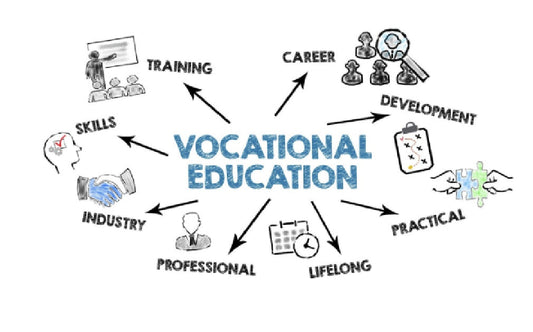The National Centre for Vocational Education Research (NCVER) has released its comprehensive 2024 report on Vocational Education and Training (VET) student outcomes, providing valuable insights into the effectiveness and impact of Australia's vocational education system. This analysis examines the key findings from data collected between June and August 2024, covering students who completed their training in 2023.
Training Completion and Achievement Dynamics
The report reveals significant patterns in student achievement across different completion categories. Among the 159,851 qualification completers surveyed, 87.4% achieved their primary training objectives, though this represents a marginal decline of 0.7 percentage points from 2023. For the 16,361 qualification part-completers, the achievement rate maintained stability at 77.0%. These figures demonstrate the VET sector's overall effectiveness in meeting student goals while highlighting areas requiring attention.
The employment-focused nature of VET education emerges clearly in the data, with 72.8% of completers and 73.5% of part-completers undertaking training for employment-related reasons. The predominant motivation for both groups was "to get a job," cited by 23.4% of completers and 20.2% of part-completers, underlining the sector's crucial role in workforce development.
Employment Outcomes and Labor Market Integration
The employment outcomes data presents a complex picture of the sector's effectiveness in facilitating workforce integration. The proportion of qualification completers reporting improved employment status decreased by 3.2 percentage points to 64.4% in 2024. This decline becomes particularly noteworthy when examining specific employment transitions. Among those not employed before training, 45.0% secured employment post-training, marking a substantial decrease of 5.6 percentage points from 2023.
A deeper analysis of employment patterns reveals that 77.1% of qualification completers were employed after training, with 80.4% receiving at least one job-related benefit. The most frequently cited benefit was gaining additional job-related skills, reported by 48.9% of completers. However, the data shows a concerning trend in occupational alignment, with only 28.3% of completers working in the same occupation as their qualification, down 1.4 percentage points from the previous year.
Short Course and Subject-Only Completion Trends
The report provides valuable insights into short course and subject-only completion patterns. Among the 20,476 short course completers, 91.9% achieved their main reason for training, showing a slight increase of 0.9 percentage points from 2023. The 9,958 short course part-completers maintained a high achievement rate of 92.0%. These figures suggest particularly strong outcomes in shorter, targeted training programs.
For subject-only completers, numbering 37,132, the achievement rate remained stable at 91.9%. Notably, 87.2% of these students undertook training for employment-related reasons, with 50.4% citing job requirements as their primary motivation. This indicates the significant role of targeted, subject-specific training in meeting workplace requirements.
Income and Economic Outcomes
The economic impact of VET qualifications remains substantial, with the median annual income for certificate II or higher qualification completers in full-time employment reaching $67,800. The data reveals notable variations across fields of study, with Engineering and related technologies graduates commanding the highest median income at $78,300, while Mixed-field programs graduates earned substantially less at $41,300. This disparity highlights the importance of field selection in determining economic outcomes.
Further Education Progression Patterns
The data shows stable trends in further education pathways. In 2024, 33.3% of qualification completers pursued additional studies, with 21.7% advancing to higher-level qualifications. For part-completers, the figures stand at 22.4% for further study and 11.1% for higher-level study. Short course completers showed slightly different patterns, with 22.4% pursuing further study, representing a decrease of 2.2 percentage points from 2023.
Student Satisfaction and Quality Indicators
Student satisfaction metrics present a positive picture of the sector's quality. The overall satisfaction rate among qualification completers increased slightly to 89.5%, up 0.5 percentage points from 2023. Similarly, 85.1% indicated they would recommend their training provider. Part-completers reported lower but still substantial satisfaction rates at 77.8%. Short course completers demonstrated particularly high satisfaction levels at 92.2%, indicating strong delivery of targeted training programs.
Understanding Non-Completion Factors
The analysis of discontinuation reasons provides valuable insights into student retention challenges. Personal reasons emerged as the primary factor at 21.9%, followed by job-related changes at 17.6% and unmet expectations at 12.8%. For short-course part-completers, personal reasons were even more significant at 32.0%, suggesting different retention dynamics in shorter programs.
Employment Benefits and Skill Development
Post-training employment benefits data reveals important patterns in skills development and career advancement. Among employed completers, 16.1% achieved higher skill level positions, though this represents a decrease of 1.6 percentage points from 2023. The fact that 28.0% found their training relevant despite working in different occupations suggests the transferability of skills acquired through VET education.
Provider Performance and System Trust
The willingness of students to recommend their training providers serves as a key indicator of system quality. The high recommendation rate of 85.1% among completers shows strong confidence in the VET system. Facilities and learning resources also received high satisfaction ratings, with 85.1% of completers satisfied with facilities and 84.2% satisfied with learning resources.
Looking Forward: Implications and Recommendations
The 2024 NCVER data presents several implications for the VET sector's future development:
The slight decline in employment outcomes suggests a need for enhanced alignment between training delivery and labour market demands. The sector should strengthen industry partnerships and ensure curriculum currency.
The high satisfaction rates across different completion categories indicate strong teaching and assessment quality, but the variation between qualification completers and part-completers suggests room for improvement in supporting partial completers.
The significant proportion of students undertaking training for employment-related reasons reinforces the need for continued focus on workplace relevance and industry engagement.
The disparity in income outcomes across fields of study highlights the importance of career guidance and program selection support for prospective students.
The 2024 NCVER data presents a comprehensive picture of Australia's VET sector performance. While maintaining high levels of student satisfaction and achievement, the sector faces challenges in employment outcomes and qualification-occupation alignment. The stability in further education progression rates and the strong employment focus of training motivations demonstrate the sector's continued relevance in workforce development.
The variations in outcomes across different completion categories and fields of study suggest opportunities for targeted improvements in program design and delivery. The high satisfaction rates provide a strong foundation for future development, while the employment outcome trends indicate areas requiring enhanced focus on industry alignment and student support.
These insights provide crucial guidance for policymakers, training providers, and stakeholders in their efforts to enhance the effectiveness and responsiveness of vocational education in Australia. The sector's ability to adapt to these findings while maintaining its strong focus on quality and student satisfaction will be crucial for its continued success in meeting workforce development needs.


































